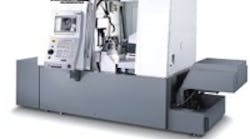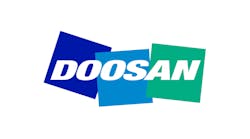Shops in the market for Swiss-style turning machines often make one of two possible mistakes. The first is that they purchase a machine with all the bells and whistles, thinking that those features will let them handle anything that comes through the door. While this may be true, their machine payments and dollar-per-hour rates typically are so high that it is tough for them to be competitive. The second mistake is that a shop spends as little on a machine as possible, only to discover it handles only a small portion of the jobs that the shop could bid on.
What do Swiss turning machine builders suggest? Swiss turning machines are application driven, so builders recommend shops purchase what they need. And how does a shop find out what it needs? Builders advise that shops gather up drawings of parts they intend to make and have several Swiss turning machine builders review them to determine which machine is appropriately equipped to perform the job. The machine builders also can explain the differences between machine brands.
No matter what the brand of Swiss-style machine, shops that are looking to buy one also should familiarize themselves with the basic machine features and capabilities that are designed to reduce part cycle times. These include tool capacities (driven and stationary), number of tools in the cut at one time, whether the machine is equipped with a fixed or sliding headstock, the machine's main spindle speed, C-axis functions, sub spindles (counter spindles) and programming software. The accompanying chart addresses these features and capabilities for brands of Swiss-style turning machines designed to handle barstock measuring about 20mm in diameter.
Machine | Gildemeister Speed 32-8 | KSI Swiss SQC-20/32 | Marubeni Citizen-Cincom L20 | Nexturn SA 20D | Tornos Deco Sigma 20 | Traub TNL 26 | Tsugami BE20-V |
Total tool capacity | 32 | 22 (optional 24) | 11 | 21 | 22 (14 front, 8 back) | 58 (32 of which can be live) | 21 |
Number of tools in cut simulataneously | 3 | 2 | 2 | 2 | 2 | 4 | 2 |
Fixed or sliding headstock | Sliding | Sliding | Sliding | Sliding | Sliding | Fixed and sliding capabilities | Sliding |
Main spindle speed | 18,000 rpm | 8,000 rpm | 10,000 rpm | 200-8,000 rpm | 100 - 10,000 rpm | 8,000 rpm (min.-1) | 200 - 12,000 rpm |
Sub spindle (counter spindle) | Yes | Yes | Yes | Yes | Optional | Yes | Yes |
C axis capability | Two C axes (with driven tools) | C axes (both spindles) (instantaneous indexing) | C axis | Full C axes | Full C axis with 0.001 deg indexing (optional) | C axes (both spindles) | C-axis (optional) |
Programming software | Simplified programming from a Fanuc Series 16i control | Part Maker and Virtual Gibbs | Soon to be released | (both spindles, 0.001 deg indexing) | TB Deco or ISO | WinFlex IPS | BE-Abile |
Comments | Linear drives for axis accelerations from 0 to 1,574.8 ipm in 0.04 sec | 7.5-hp main spindle | New modular machine concept and Mitsubishi Meldas 700LC control | MPG program prove out | Toolholders and accessories interchange between two tool systems | 8-hp live-tool drives | Opposed gang slides for reduced chip-to-chip time |
Contact |








